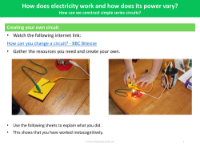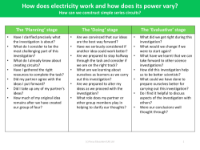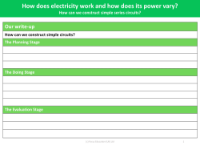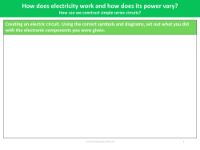How can we construct simple series construct? - Teacher's Notes
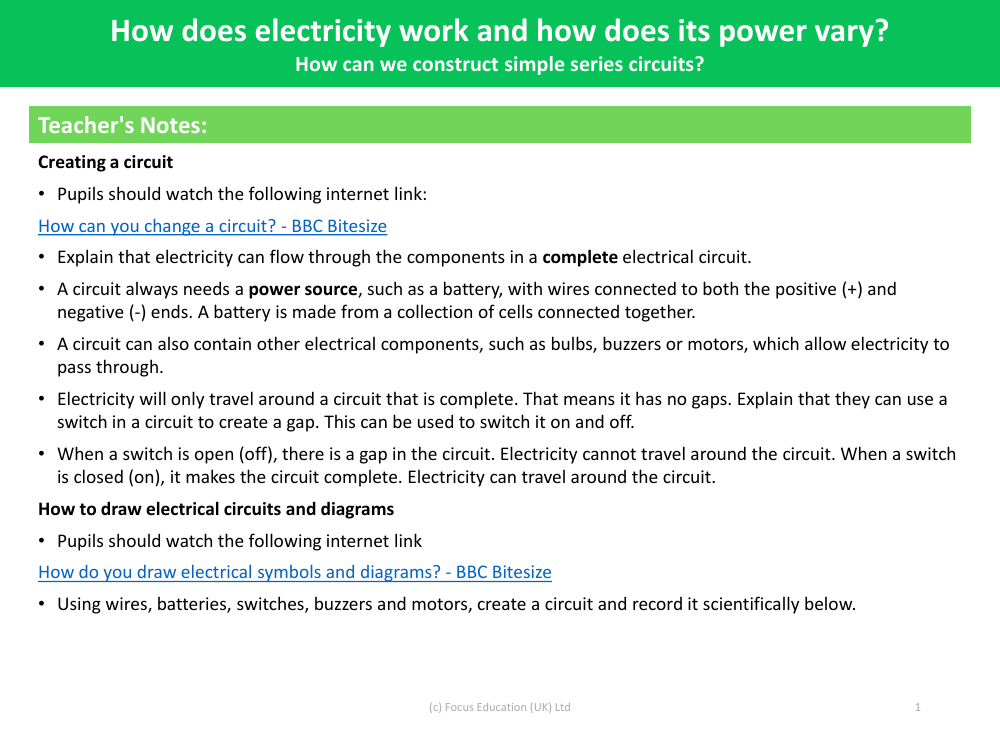
Science Resource Description
When teaching pupils about constructing simple series circuits, it's important to start by providing a foundational understanding of how electricity flows through a complete electrical circuit. The lesson can begin with pupils watching educational content from BBC Bitesize that explains how circuits can be altered. The key takeaway is that electricity requires a complete path—without any gaps—to move through the components, such as bulbs, buzzers, or motors.
Further instruction should clarify that a circuit must have a power source, typically a battery, which is actually a collection of cells. Wires must be connected to both the positive (+) and negative (-) terminals of the battery to facilitate the flow of electricity. Introducing a switch into the circuit provides a means of control; when the switch is open, it creates a gap, stopping the flow of electricity, and when closed, it completes the circuit, allowing electricity to flow once again. Pupils are also encouraged to learn how to draw electrical circuits and diagrams, using standard symbols for each component, which is a crucial skill for recording and communicating their scientific observations effectively.

